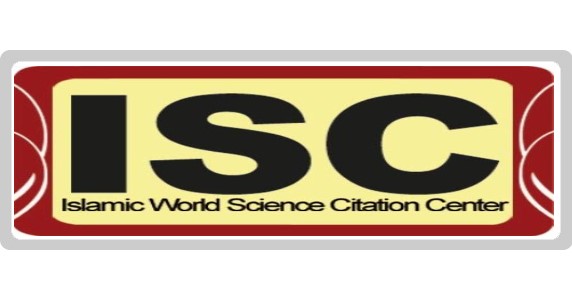Lived Experience of Elementary School Teachers Regarding an Ineffective (Redundant) Curriculum
Keywords:
ineffective curriculum (redundant), elementary school teachers , Lived experienceAbstract
Purpose: The purpose of this study is to examine the lived experience of elementary school teachers regarding an ineffective (redundant) curriculum.
Methodology: This study is qualitative and follows a phenomenological approach. The statistical population includes all elementary school teachers in Isfahan Province, from which 27 participants were selected using purposive sampling of desirable cases. Data were collected through in-depth semi-structured interviews. The collected data were analyzed using the thematic analysis technique based on Colaizzi's method. The credibility of the findings was ensured using Guba and Lincoln's criteria, and the reliability of the interviews was assessed through intra-subject agreement.
Findings: The results identified four overarching themes: factors contributing to an ineffective curriculum, characteristics of an ineffective curriculum, barriers to eliminating an ineffective curriculum, and strategies for overcoming an ineffective curriculum. After identifying the basic, organizing, and overarching themes related to the ineffective curriculum, a model of the ineffective curriculum was developed.
Conclusion: The results indicated that an ineffective curriculum is shaped by various factors and faces obstacles to its elimination. Providing appropriate strategies can contribute to improving the quality of education.
Downloads
References
Bezi, A., Fakoori, H., Bayani, A. A., & Saemi, H. (2024). Design and Validation of an Environmental Education Curriculum Model for Higher Education Based on the "Aker" Approach [Research Article]. Iranian Journal of Educational Sociology, 7(1), 79-90. https://doi.org/10.61838/kman.ijes.7.1.8
Bray, M., & Ventura, A. (2023). Multiple systems, multiple shadows: Diversity of supplementary tutoring received by private-school students in Dubai. International Journal of Educational Development, 92, 102624. https://doi.org/10.1016/j.ijedudev.2022.102624
Chestrom, C. R., Ghosh, P., Rai, A., & Shukla, D. (2017). The impact of support at the workplace on transfer of training: a study of an Indian manufacturing unit. International Journal of Training and Development, 20(3), 200-213. https://doi.org/10.1111/ijtd.12083
Dameron, M. L., Camp, A., Friedmann, B., & Parikh-Foxx, S. (2020). Multicultural education and perceived multicultural competency of school counselors. Journal of Multicultural Counseling and Development, 48(3), 176-190. https://doi.org/10.1002/jmcd.12176
Farley, J. (2018). Teachers as obligated bystanders: Grading and relating administrator support and peer response to teacher direct intervention in school bullying. Psychology in the Schools, 55(9), 1056-1070. https://doi.org/10.1002/pits.22149
Fathi Vajargah, K. (2011). Superfluous/Disposable Curriculum.
Hassanpour Dehnavi, G. R., Momeni Mohammadi, H., Zirak, M., & Ajjam, A. A. (2021). Designing and Validating a Superfluous Curriculum Model with a Mixed Approach (Case Study: Curriculum of Technical and Vocational Schools in Secondary Education). Innovations in Educational Management, 17(4), 60-75. https://civilica.com/doc/1528841/
Kafshchian Moghadam, A., Maleki, H., & Sadeghi, A. (2024). Designing a Citizenship Rights Curriculum Model for the Second Period of Elementary Education [Research Article]. Iranian Journal of Educational Sociology, 7(2), 1-7. https://doi.org/10.61838/kman.ijes.7.2.1
King, K. (2015). Moving the needle how skill Soft learning impacts performance of individuals. https://www.mercurymagazines.com/pdf/SKILLSOFT1.pdf
Mirshamsi, H., Mohammadi Ahmad Abadi, N., & Alizadeh Asli, A. (2024). Identifying the Dimensions and Components of the Play-Based Curriculum in the Preschool Period based on the Montessori Theory. Sociology of Education, 10(1), 141-151. https://doi.org/10.22034/ijes.2024.2017646.1514
Momeni Mohammadi, H., Hassanpour Dehnavi, G. R., Zirak, M., & Ajjam, A. A. (2021). Exploring the Dimensions of the Superfluous Curriculum in the Second Cycle of Technical and Vocational Education. Bi-Monthly Scientific-Research Journal of Strategies in Medical Sciences, 14(2), 72-81. https://edcbmj.ir/article-1-2402-fa.html
Moran, E., Seaneen, S., Elaine, W., & Laura, T. (2024). Exploring restorative practices: Teachers' experiences with early adolescents. International Journal of Educational Research Open, 6, 100323. https://doi.org/10.1016/j.ijedro.2024.100323
Murai, Y., & Juan, A. Y. S. (2024). Making as an opportunity for classroom assessment: Canadian maker educators' views on assessment. International Journal of Child-Computer Interaction, 39, 100631. https://doi.org/10.1016/j.ijcci.2023.100631
Nikmohammadi, Z., Shafii, N., & Arakiyeh, A. (2023). Identifying the Dimensions and Components of Heutagogical Curriculum in Secondary Education. Sociology of Education, 9(2), 275-286.
Pascale, C. (2012). Competency Development Best Practice: Learn the Five Best Practice to.
Salehi, M., Dehghani, M., & Khatat, M. (2023). Reflections on the Superfluous Curriculum in the Field of Primary Education. Theory and Practice in Curriculum, 11(21), 38-39. https://cstp.khu.ac.ir/browse.php?a_id=3353&sid=1&slc_lang=fa
Saloviita, T. (2020). Attitudes of teachers towards inclusive education in Finland. Scandinavian Journal of Educational Research, 64(2), 270-282. https://doi.org/10.1080/00313831.2018.1541819
Schreier, M., Fuchs, C., & Dahl, D. W. (2089). The innovation effect of user design: Exploring consumer's innovation perceptions of firms selling products designed by users. Journal of Marketing, 76(5), 18-32. https://doi.org/10.1509/jm.10.0462
Torakhan, R., Hakimzadeh, R., Dehghani, M., & Salehi. (2017). Designing a Model for Reducing Curriculum Waste in Technical and Vocational Education. Quarterly Journal of Applied Research, 8, 139-158. https://japr.ut.ac.ir/article_67916.html
Vigren, H., Jenni, A., Leena Maria, H., Emmanuel, O. A., & Nancy, L. C. (2022). Teaching immigrant students: Finnish teachers' understandings and attitudes. Teaching and Teacher Education, 114, 103689. https://doi.org/10.1016/j.tate.2022.103689
Yasemi, S., Hosseini Khah, A., & Kian, M. (2022). A Reflection on the Characteristics of Creativity-Based Curriculum in Primary Education. Research in Primary Education, 4(7), 1-19. https://reek.cfu.ac.ir/article_2370.html
Downloads
Published
Submitted
Revised
Accepted
Issue
Section
License
Copyright (c) 2025 سجاد ایزدی (نویسنده); مهدی کشاورزی; فرزانه واصفیان (نویسنده)

This work is licensed under a Creative Commons Attribution-NonCommercial 4.0 International License.










